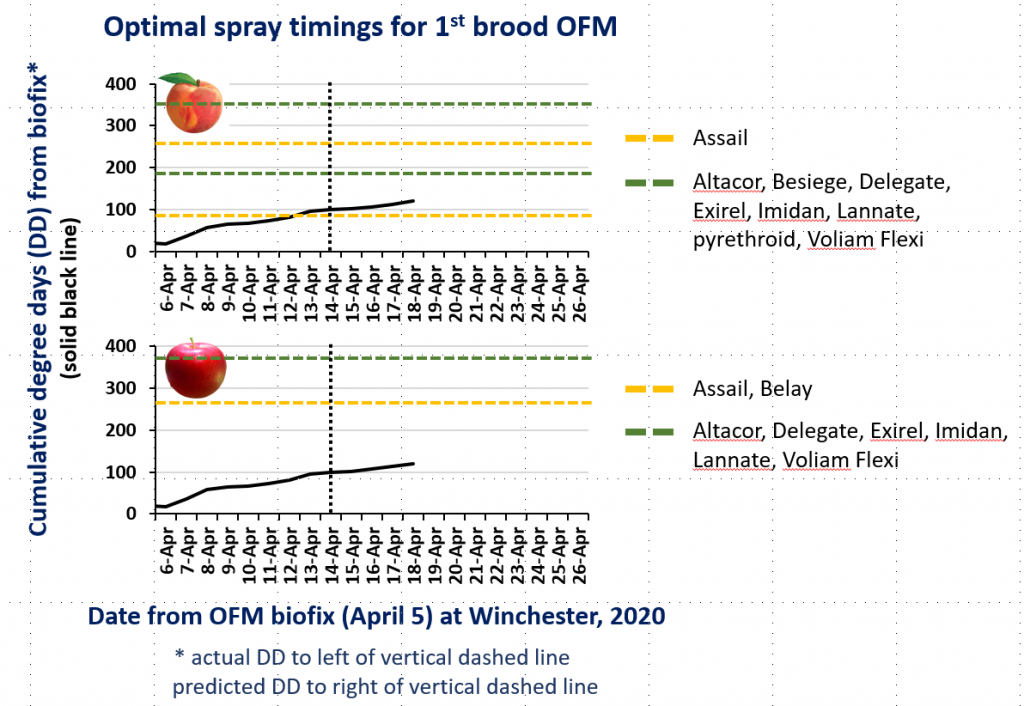Greetings, This year I’m going to try a new way to present degree day (DD) accumulations from biofix and optimal spray timing recommendations for various insecticides for OFM and codling moth (CM). As I noted last week, OFM biofix was set at Winchester on April 5. The solid black line in the graphs below shows how many DD already have and are predicted to accumulate for OFM since biofix (see footnote). The colored horizontal lines are recommended optimal timings for the color-coded products shown to the right of the graphs. These recommended optimal timings are based on the relationship between DD accumulations and the percentage of eggs of each brood that have hatched (here the 1st brood of OFM). Note that recommended timings amd number of sprays for 1st brood OFM differ between apple and peach. The vertical dashed black line separates actual DD accumulations (to left of line) and 5-day predicted accumulations (to right of line), based on output from Cornell’s NEWA system using temperature data from the weather station at the Winchester AREC. When the solid black line crosses one of the colored lines, the date on the horizontal axis below is the optimal date to apply the product corresponding to that color. So, for Assail in peaches, the best timing would have been April 12th or 13th. As the solid black line approaches the intersection with one of the colored lines, this will give you advanced notice that an optimal spray timing is approaching. Of course, the decision to apply an insecticide can also be informed by moth captures in pheromone traps. For 1st brood OFM in peaches the threshold is an average of more than 15 moths/trap/week and in apples is more than 30 moths/trap/week. Once we are into 2nd brood OFM, the threshold is more than 10 moths/trap/week for both crops. We have not captured CM in our traps at the AREC, but will include a similar graph for it once biofix has been set.

